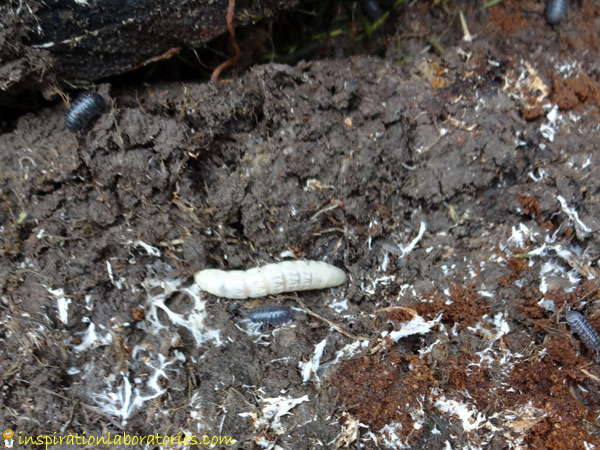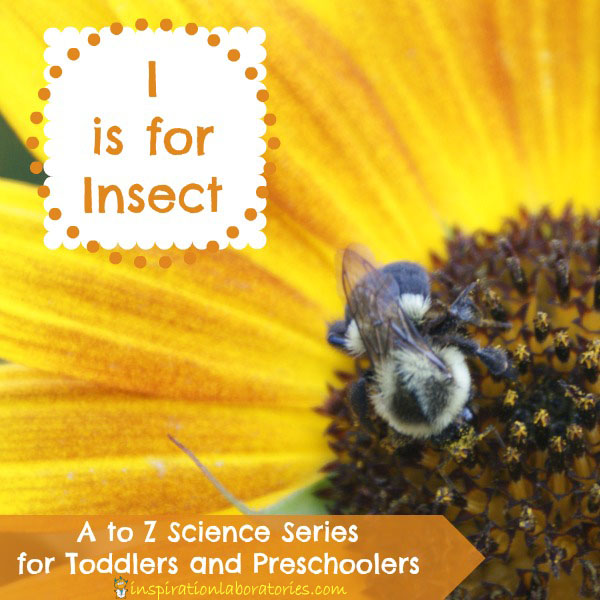I is for Insect Investigations
Our next letter in the A to Z Science series for toddlers and preschoolers here at Inspiration Laboratories is the letter I. I is for Insect Investigations. Take some time to explore and investigate insects with your toddlers and preschoolers.
What is an Investigation?
In A is for Apple Tree Investigation, I talked about what it means to investigate – to observe or study closely. Making observations with our 5 senses helps us learn more about the world around us.
Try Your Own Insect Investigations
Head outside and look for insects to observe.
Where to Look
Insects are pretty much everywhere outside. Take a close look around and you’ll surely see some.
- Flowers – you’ll find flying insects like lady beetles, solider beetles, and cucumber beetles as well as ants and smaller insects like aphids. Watch out for bees and wasps!

- Grass – try looking next to your house. You might find crickets or grasshoppers to observe. Ants are also common there. Looking out into a grassy field, you could be fortunate enough to see a butterfly or two.

- Under logs or rocks – you might find grubs or even a large beetle

How to Observe
- Watch them and follow them around.
- Ask questions: What are they doing? Where are they going? What do they look like {color, size, shape}?
- Count their legs. Insects have 6 legs. {Spiders and other arachnids have 8 legs.}
- Look at their body parts. Insects have 3 main parts: head, thorax, and abdomen. {Ants are great for observing all 3 parts.}
- Listen to them. Do they make any sounds? Can you track down an insect by following its sound? {like a cricket maybe?}
Record Your Findings
- Take pictures of the insects you find and create a photo book.
- Draw pictures of the insects in a nature journal.
- Write down descriptions of the insects in your nature journal. {Have younger kids tell you what to write.}
Share Your Findings
Head over to the Inspiration Laboratories Facebook page and share with us there.
A to Z Science for Toddlers and Preschooler ebook

The full A to Z Science series is in an ebook. A to Z Science for Toddlers and Preschoolers is an introduction to science for ages 2 to 5. This ebook includes one science activity for each letter of the alphabet. From apples to zoo, these experiments and explorations are sure to be a hit.
Each of the 26 science ideas includes a materials list, instructions for the activity, questions to ask, and the science behind it. Variations and modifications for different ages are provided when possible.
Take these ideas as a jumping off point to start doing science with your child!
More Investigations to Try
- Experiment with candy hearts to see which ingredient reacts with baking soda.
- Investigate density by creating density layers with saltwater.
- Create your own investigations in the kitchen. Here are some examples of easy kitchen chemistry ideas to get you started.
- Explore baking soda and vinegar reactions differently by using frozen vinegar.
Subscribe to the Inspiration Laboratories newsletter. Each issue has exclusive hands-on science explorations for children, a recap of our latest activities, and special resources selected just for you!


Leave a Reply